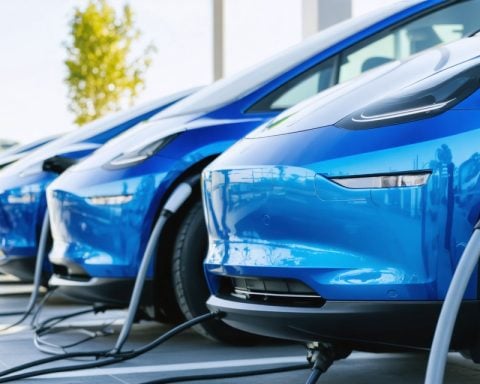The Future of JLR’s Popular Model
Jaguar Land Rover (JLR) is eager to electrify all its sub-brands, including the much-loved Land Rover Defender. However, the journey to transform this iconic 4×4 into an electric vehicle (EV) is fraught with challenges.
Space Limitations in Design
The current Defender is designed with a combustion engine in mind, which limits the flexibility needed for an easy transition to EV technology. According to JLR’s chief commercial officer, the task of retrofitting the Defender is more complicated than merely swapping out the old powertrain. The vehicle needs ample space for batteries and, given the robust demands of off-road travel, integrating EV components while maintaining performance is problematic.
The Path Forward for JLR
Despite these obstacles, JLR remains committed to developing electric models across its lineup, including the iconic Defender. The feasibility of introducing an electric Defender could depend on either waiting for a new generation or making adaptations to the existing platform. Another possibility is creating a separate EV model altogether, akin to the relationship between the Porsche Macan and its electric counterpart.
A Glimmer of Hope
While a fully electric Defender may still be some years away, the mere discussion of its potential reflects JLR’s intent to embrace an electrified future, which could excite fans and increase competition in the electric SUV market.
Implications of Electrifying JLR’s Defender
The transition of Jaguar Land Rover’s (JLR) Defender to an electric vehicle (EV) encapsulates a broader shift in the automotive industry that reverberates through society, culture, and the global economy. As major brands pivot toward electrification, this trend not only modernizes iconic vehicles but also reshapes consumer expectations and lifestyle choices. Electric vehicles are increasingly viewed not just as alternatives to traditional cars but as symbols of sustainability and innovation.
Culturally, the electrification of the Defender—an emblem of ruggedness and adventure—poses the intriguing question of identity. Can an electric iteration maintain the spirit of exploration that has defined Land Rover? This reflects a larger societal movement towards greener transport solutions, as consumers increasingly demand vehicles that align with their values. With the global push for carbon neutrality, the automotive sector is under significant pressure to innovate. JLR’s efforts showcase a potential ripple effect across the industry, propelling competitors to also pursue electrification aggressively.
On an economic level, the move signals a blow to fossil fuel dependency while fostering new job opportunities in EV technology and sustainable materials. However, the transition comes with environmental challenges, particularly concerning the sourcing and sustainability of battery materials. Future trends indicate a significant shift towards recycling and reusing EV batteries, which will be crucial for mitigating environmental impact.
As we look ahead, JLR’s electrification endeavor might well be a barometer for the broader health and adaptability of not just automakers, but entire economies as they transition toward sustainability. The long-term significance of these changes could be monumental, laying the groundwork for future advancements in both technology and environmental stewardship.
Why the Electric Land Rover Defender Could Change Off-Roading Forever
The Future of JLR’s Iconic Model
Jaguar Land Rover (JLR) is embarking on an ambitious journey to electrify its entire portfolio, including the legendary Land Rover Defender. However, this transformation poses unique challenges, especially when it comes to integrating electric vehicle (EV) technology into the Defender’s classic 4×4 design.
Challenges in Design and Space
One of the main hurdles in converting the Defender to an electric model revolves around its existing design, which is optimized for combustion engines. JLR’s chief commercial officer has indicated that retrofitting the Defender will require more than just replacing the traditional powertrain with an electric one. The integration of large battery packs necessitates significant alterations in design to preserve the vehicle’s functionality and off-road capabilities, which are crucial for maintaining the Defender’s rugged appeal.
The Roadmap for Electrification
JLR’s strategy for entering the EV market with the Defender may take several forms. Options being considered include:
– Developing a New Generation: Waiting for the architecture of a new generation Defender that is designed for electrification from the ground up could provide the necessary space and structural integrity for EV components.
– Platform Adaptation: Adjusting the existing platform to accommodate electric technology while ensuring that the vehicle’s performance remains at par with its combustion-engine counterparts.
– Creating a Separate Model: Similar to the comparison between the Porsche Macan and the upcoming electric Macan, JLR might consider producing an entirely new electric variant of the Defender, thus allowing the traditional model to coexist alongside a modern, electrified version.
The Vision Ahead
Despite the technical challenges, there is a strong indication that JLR is serious about bringing an electric Defender to market. The discussions surrounding the development of such a vehicle suggest that JLR is prioritizing electrification, which could resonate well with consumers increasingly interested in sustainable alternatives.
Pros and Cons of an Electric Defender
Pros:
– Environmental Impact: Electric vehicles are more environmentally friendly, contributing to reduced carbon emissions.
– Fuel Efficiency: Electric drivetrains can offer superior efficiency, translating to lower long-term operational costs.
– Innovative Technologies: An electric Defender could come equipped with cutting-edge technology and features, enhancing the driving experience.
Cons:
– Performance Concerns: Electrifying a model like the Defender, designed for tough terrains, may lead to performance trade-offs.
– Cost Considerations: The transition to electric could drive up production costs, which might be reflected in higher retail prices.
– Consumer Adaptation: Existing Defender enthusiasts may be hesitant to accept an electric variant, fearing it could dilute the brand’s rugged heritage.
Market Trends and Insights
The electric vehicle market is on a rapid growth trajectory, with consumers increasingly favoring sustainable options. JLR’s move to electrify the Defender could position the brand advantageously within the competitive SUV landscape. As established automakers pivot to electric models, JLR’s commitment to combining heritage and innovation could attract a new generation of eco-conscious buyers.
Innovations in Off-Road Electric Technology
The pursuit of electric off-road vehicles is not just a trend but a necessity for automakers wanting to stay relevant in an evolving market. Innovations in battery technology, electric drivetrains, and lightweight materials could pave the way for new capabilities in off-road vehicles, allowing them to tackle trails and terrains previously deemed challenging for EVs.
Conclusion
While the realization of an electric Land Rover Defender hinge on careful planning and development, the commitment from JLR to explore this option signals a significant shift in the automotive landscape. As EV technology continues to mature, the potential for an electric Defender may soon be a reality, setting new benchmarks for the future of off-roading.
For more information on Jaguar Land Rover, visit JLR’s official website.













